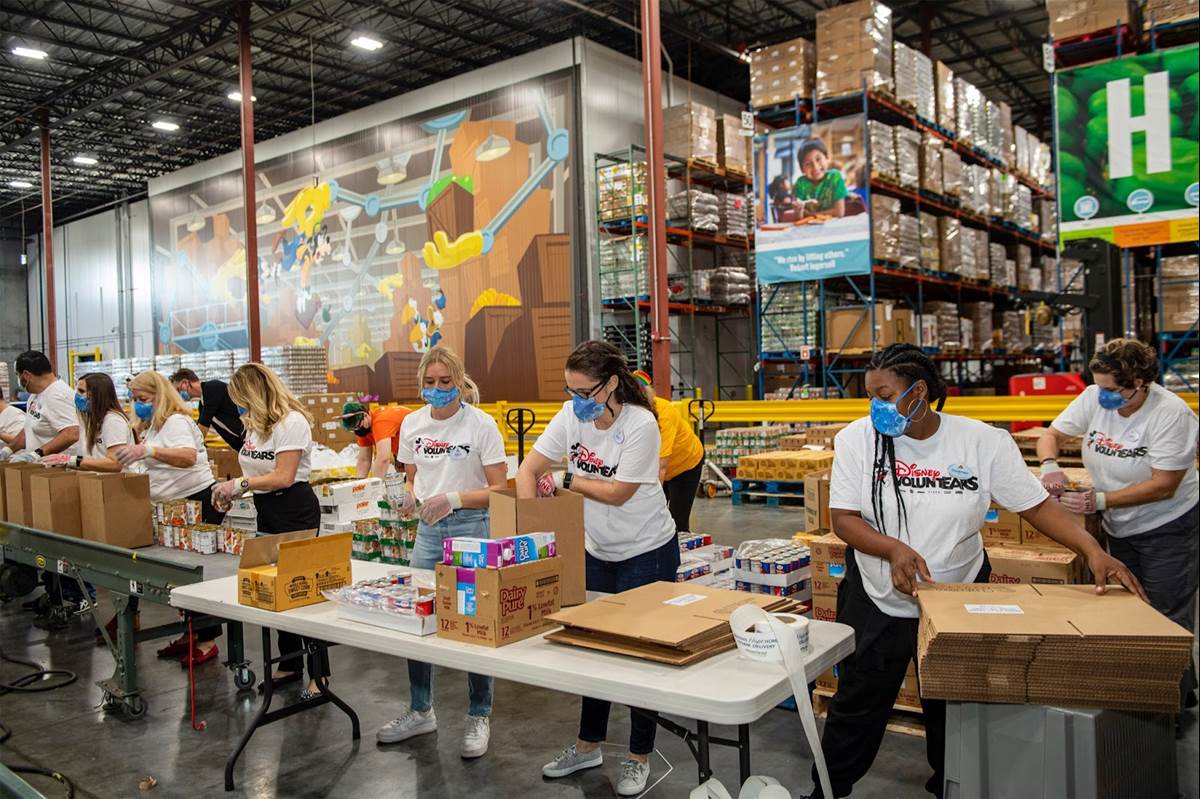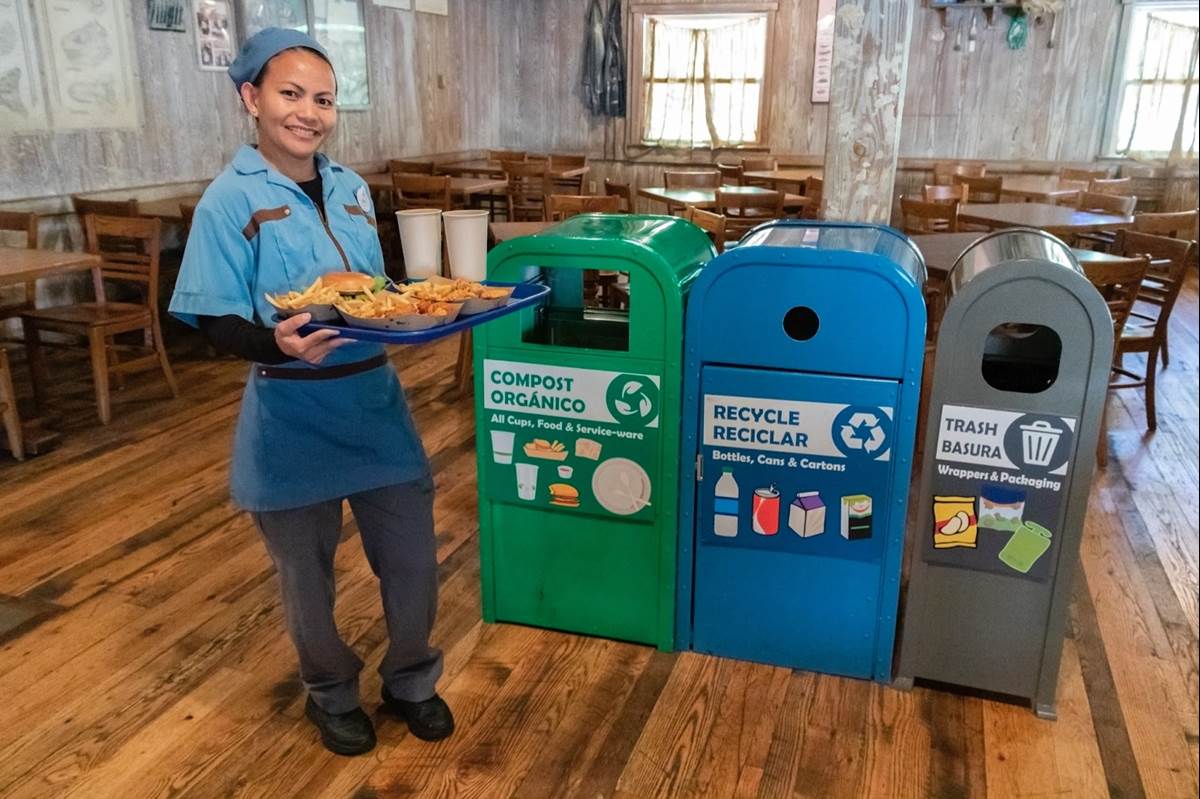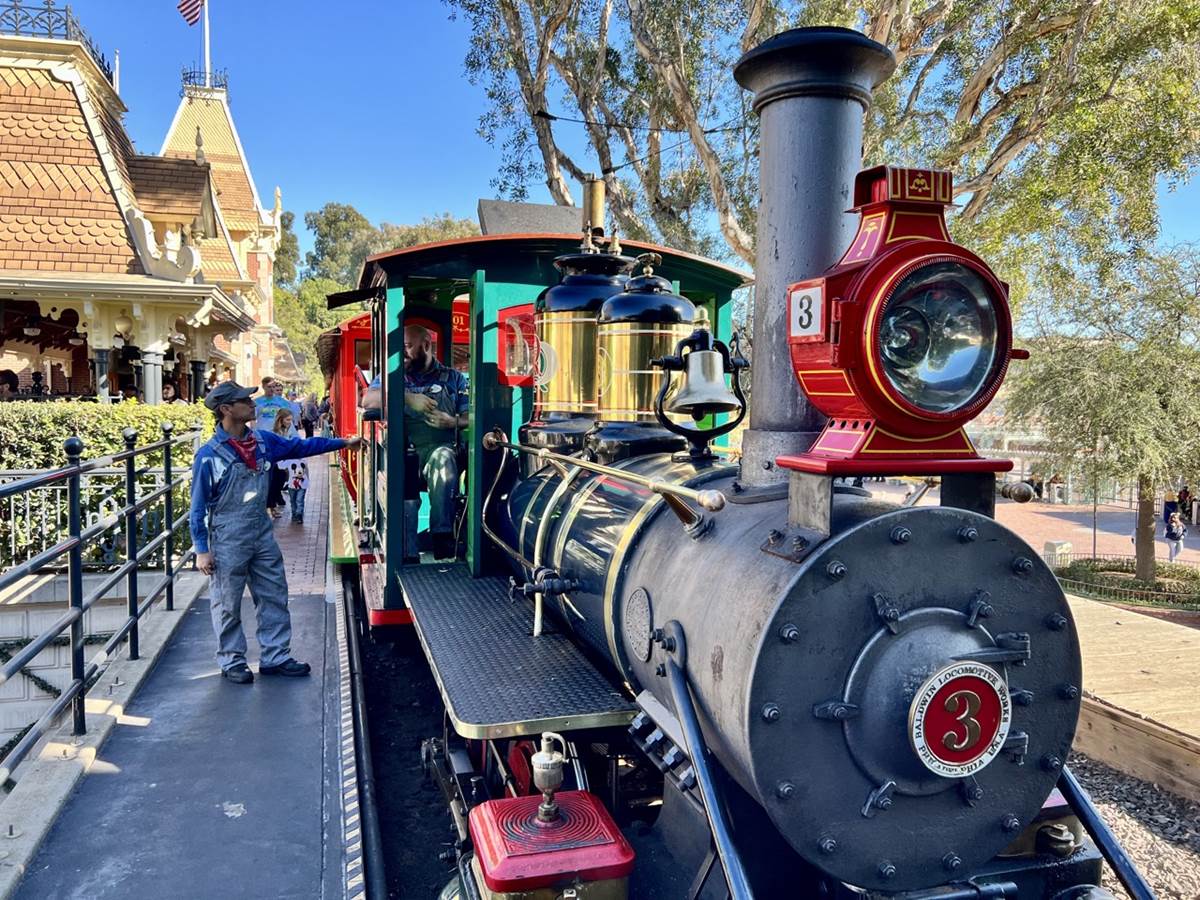As part of their efforts to celebrate Earth Month, Disney has shared exactly what happens with all of the food produced at Disney Parks across the globe that isn’t eaten.
What They’re Saying:
- Chef Michael Gonsalves, a chef at Walt Disney World Resort, said: “Across Disney Parks, we are committed to reducing food waste with a goal of zero waste to landfill. To aid in this effort, we try to maximize food waste diversion. Pushing the bar on food quality and innovation is one thing, but most important is the consideration of our carbon footprint and its impacts on our world. The vision and dedication to drive sustainable zero-waste models should be the goal for everyone on this planet if we plan to see it thrive for generations to come.”
The Full-Circle Food Cycle:
- The full-circle food cycle begins with menu planning to predict how many meals we’ll serve in our parks each day. This helps prevent food waste before it begins. After a menu plan is made, fresh fruits and vegetables are harvested, some of which are grown on Disney property. Chef Michael’s team, Chef Damon Lauder and Sous Chef Heather Sylvester, harvest fresh produce and collect honey daily, all produced right on-site. If you’ve ever eaten at The Land pavilion in EPCOT, you may have enjoyed some of the fresh, local produce grown inside the attraction.
- Even after you’re home and thinking about that delicious Disney meal, the journey of your food isn’t over. Any scraps left behind are collected in designated food waste bins. Across Disney Parks, food waste is used in many ways.
Food for Plants and Animals:
- Food waste can be used for composting, nature’s way of recycling. At Walt Disney World, food waste is sent to an off-site commercial composting facility where it naturally breaks down and is recycled into a nutrient-rich soil product, often used for gardening, farming, landscaping and more.
- In fact, compost soil made from Walt Disney World’s food waste is used to fertilize plants at Restaurantosaurus and in the Pollinator Garden at Rafiki’s Planet Watch, both at Disney’s Animal Kingdom.
- In 2021, Walt Disney World composted 15 million pounds of unusable food scraps.
- At the Disneyland Resort, scraps from food preparation in kitchens and uneaten food from guests is diverted from landfill and converted, if eligible, into an amendment that helps feed farm animals.
Energy:
- When you take the Grand Circle Tour aboard the Disneyland Railroad, does it ever smell like fries? That’s because the steam trains run on biodiesel. Used cooking oil from the restaurants around the resort helps fuel all five steam trains and the Mark Twain Riverboat. This eliminates approximately 200,000 gallons of petroleum diesel per year.
- For these food waste reduction efforts and many more, Disneyland Resort was recently awarded the “Food Recovery Challenge Award” from the US Environmental Protection Agency and the “SEAL Business Sustainability Award” for in the environmental initiative category for managing food waste.
- Hong Kong Disneyland converts their food scraps into energy – and diverts food waste from landfills in the process – by sending 360 tons of food waste to the government’s anaerobic digestion facility in 2021.
- Disneyland Paris recovers up to 93% of its food waste, which is transformed into energy through biomethanization. In 2019, 2,061 tons of food waste was processed to produce 745 MWh of energy, the equivalent of the annual consumption of 229 families.
Donated Foods:
- Prepared, but not served, meals eligible for human consumption are donated to local food banks such as Second Harvest Food Bank. Since March 2020, Disney has donated more than $14.6 million worth of food to hunger-relief organizations globally – the equivalent of more than 2.1 million meals! Here are a few food donation facts from around Disney Parks:
- In 2021 alone, Walt Disney World Resort donated more than 550,000 pounds of excess prepared food to Second Harvest Food Bank of Central Florida with Disney VoluntEARS spending nearly 3,000 hours at the warehouse, helping to sort and pack food delivered across the region. The resort also donated $500,000 to further support the organization and its mission to create hope and nourish lives through a powerful hunger relief network.
- Disneyland Resort provided more than 90,000 meals to the Orange County community in 2021. And in 2019, Disneyland Resort’s combined efforts avoided more than 8 million pounds of food from landfills.
- Hong Kong Disneyland joined with Foodlink Foundation to launch Disney Meal Box Express. Since June 2021, the program has provided around 12,500 healthy, freshly cooked meal boxes to those most impacted by the pandemic across four Hong Kong districts. The donations are prepared every Thursday by more than 200 Disney VoluntEARS and the Food & Beverage team.
- Each year, over one-third of all food produced in the U.S. is never eaten. The resources attributed to U.S. food loss and waste are equivalent to 140 million acres of agricultural land, an area the size of California and New York combined. That’s why Disney is working to make a difference at their Parks & Resorts.
- Significant resources go into growing, processing, packaging, storing, and distributing food. Of course, the most important action we can take to reduce the environmental impacts of uneaten food is to prevent that food from becoming waste in the first place.
Laughing Place recommends MouseFanTravel.com for all your Disney travel planning
Fill out the form below for a free,
no obligation quote from MouseFanTravel.com
no obligation quote from MouseFanTravel.com




